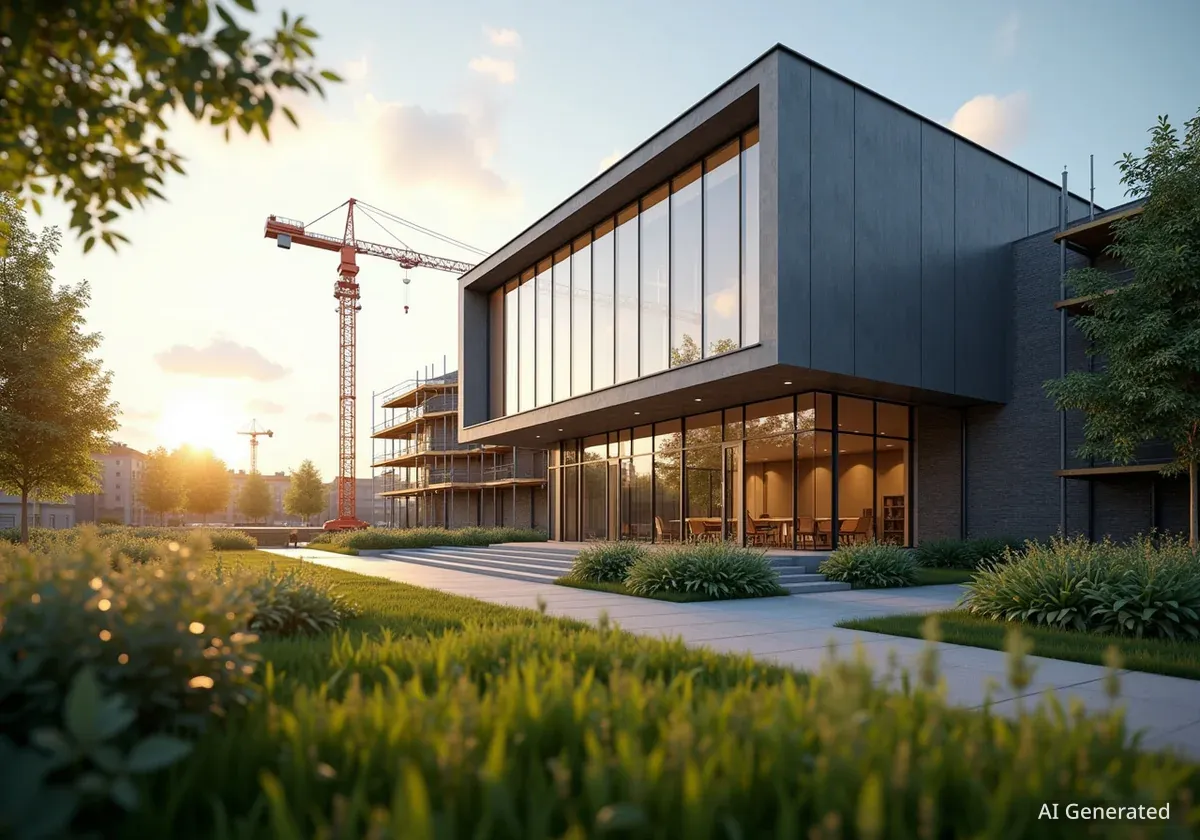In the commercial real estate market, the anticipated wave of distressed assets has not materialized as a massive tsunami, but rather as a series of steady ripples. This has created a nuanced environment where specialized investors are finding targeted opportunities for rescue capital, particularly in the multifamily and industrial sectors. Firms are deploying sophisticated strategies to identify and restructure underperforming properties, navigating a landscape shaped by valuation uncertainty and shifting lender attitudes.
Key Takeaways
- The expected flood of distressed commercial real estate assets has been a slower, more gradual process than initially predicted.
- Private credit funds and specialized investors are actively deploying rescue capital, but deals require complex negotiations and hands-on management.
- Multifamily properties, especially older buildings, and some industrial assets represent key areas of opportunity for these investors.
- Unlike early predictions, traditional banks have remained active in lending, pushing private credit into more specialized and riskier areas like construction and mezzanine financing.
- Transaction and lending volumes in commercial real estate have shown significant year-over-year growth, indicating a market that is adapting rather than collapsing.
The Shifting Landscape of Real Estate Distress
Following the economic uncertainty of recent years, many analysts predicted a surge of distressed commercial real estate hitting the market. This forecast prompted the formation of numerous rescue-focused funds from firms like Dwight Capital, Denholtz, and Lightstone, all preparing to capitalize on widespread financial trouble.
However, the reality has been more subdued. Andrew Weiner, a partner at the law firm Pillsbury Winthrop Shaw Pittman, described the complex negotiations involved in rescue equity deals as "the greatest sport you can have in negotiating." Yet, these intricate workouts have been hampered by persistent uncertainty over property values, especially for struggling office assets in a high-interest-rate climate.
Matt Drummond, a senior managing director at Acore, noted that a lack of consensus among existing lenders and partners on how to move forward has been a major obstacle. "When all constituents within an existing capital stack can’t agree on a path forward, it’s hard for creative rescue capital to come in and help solve a problem," Drummond explained. This gridlock has slowed the pace of large-scale rescue operations.
A Gradual Thaw and Targeted Strategies
Recently, the market has begun to change. As property valuations become clearer, lenders are showing more willingness to negotiate discounted payoffs, opening the door for new capital to enter. This shift has allowed savvy investors to execute complex deals that were previously stalled.
Joe Biasi, head of research for commercial capital markets at Newmark, characterized the situation as a "slow roll" rather than a sudden crisis. "What we’ve seen is, instead of this wall, or this cliff, where everybody’s getting hit at the same time, they’ve been able to slow roll it," Biasi said.
Market Activity Rebounds
According to Newmark data, lending volume in commercial real estate through the first three quarters of 2025 has already exceeded the total for all of 2024. Furthermore, office transaction volume in 2025 is up 25% year-over-year, and debt fund activity has surged by 67% compared to the previous year.
Finding Opportunity in Multifamily
One of the most active players in this space is S2 Capital, a Dallas-based multifamily investment firm. The company employs a ground-level approach to identifying distress. Scott Everett, founder of S2 Capital, explained that sometimes the signs are simple, such as an unkempt lawn on an apartment building, which can indicate that vendors are not being paid and cash flow is tight.
This strategy led to a significant transaction in January, when S2 deployed $60 million in rescue capital to acquire a portfolio of multifamily properties in Dallas, Nashville, and Knoxville. The deal involved taking over the original owner and securing a $170 million senior loan from Acore. Despite the complexity, S2 projects a 21% internal rate of return on the investment.
"When you go all in at the wrong time, then you’re going to kind of start to burn down the house a bit. That’s why I think there’s just a lot of opportunity and interest right now."
To fund these activities, S2 Capital raised $373 million for its first rescue capital vehicle, Fund II, attracting investment from a global mix of asset managers, pensions, and wealth management firms.
The Bifurcated Market
The multifamily market is not uniform in its distress. Everett noted that it is sharply divided. Newer buildings, constructed since the 1990s, remain liquid and attract stable investment with cap rates in the mid- to high 4% range. These properties are not typically candidates for rescue capital.
Where the Deals Are
The real opportunities for rescue investors lie in older properties, particularly those built in the 1970s and 1980s. These assets are often managed by smaller regional operators, may suffer from deferred maintenance, and face significant valuation challenges due to expanded cap rates and higher borrowing costs. For these owners, a distressed sale or a creative recapitalization is often the only viable path forward.
In these situations, a firm like S2 Capital might step in with preferred equity, take control of the joint venture, and implement new management to stabilize the properties. "It’s more of the ‘get your hands dirty and roll up your sleeves’ kind of deal, not the easy layup that investors may be wanting right now," Everett said.
Role of Private Lenders and Banks
An unexpected development has been the continued activity of traditional banks. Many observers believed banks would pull back from commercial real estate lending, but according to Biasi, they have remained keen on financing opportunities, particularly for stabilized multifamily assets and strong retail properties like grocery-anchored centers.
This has pushed private credit firms into different segments of the market. They are now focusing more on areas where they can be more competitive, such as construction lending and mezzanine financing. These are higher-risk, higher-reward plays that banks are often less willing to take on.
Acore’s Drummond also sees select opportunities in the industrial sector. Specifically, he points to large, recently completed warehouses built on speculation that have struggled with lower-than-expected leasing activity. For these assets, Acore is looking to provide financing solutions that allow owners to recapitalize and weather the slow lease-up period.
Outlook for Rescue Capital
While the market has avoided a catastrophic crash, distress remains a significant factor. CMBS delinquency rates for office properties stand at 14%, with apartment delinquencies at 5%, indicating that a pool of troubled assets still exists. Investors with capital ready to deploy are waiting for the right opportunities.
Everett believes the current environment is similar to the one S2 Capital navigated when it was founded in 2012, in the aftermath of the Global Financial Crisis. He sees his firm’s size as an advantage, allowing it to be precise and agile.
"Our fund size is perfect for this type of opportunity," he stated, "because it’s not falling out of the sky where there’s billions and billions of dollars to just gobble up at super distressed pricing."
As the market continues to adjust to new economic realities, the slow but steady deployment of rescue capital is expected to continue. For investors willing to tackle complex situations and engage in hands-on asset management, the current landscape offers a unique set of challenges and rewards.





